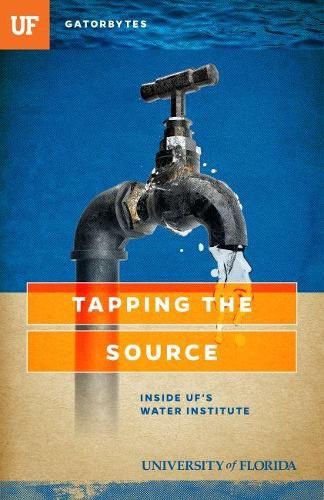Readings Newsletter
Become a Readings Member to make your shopping experience even easier.
Sign in or sign up for free!
You’re not far away from qualifying for FREE standard shipping within Australia
You’ve qualified for FREE standard shipping within Australia
The cart is loading…






This title is printed to order. This book may have been self-published. If so, we cannot guarantee the quality of the content. In the main most books will have gone through the editing process however some may not. We therefore suggest that you be aware of this before ordering this book. If in doubt check either the author or publisher’s details as we are unable to accept any returns unless they are faulty. Please contact us if you have any questions.
The University of Florida has an ambitious goal: to harness the power of its faculty, staff, students, and alumni to solve some of society’s most pressing problems and to become a resource for the state of Florida, the nation, and the world. Florida has 51,858 miles of rivers and streams, more than 2 million acres of lakes and ponds, 11.4 million acres of wetlands, 4,437 square miles of bays and estuaries, and 8,436 miles of coastline. But these water resources face myriad threats. Tapping the Source takes us inside the UF Water Institute, where talent from throughout the university address complex water issues through innovative research, education, and public outreach programs. Interdisciplinary teams from the School of Natural Resources and Environment, the School of Forest Resources and Conservation, Environmental Engineering Sciences, Geological Sciences, Soil and Water Science, and other departments develop new scientific breakthroughs, creative engineering, policy and legal solutions, and pioneering educational programs that are renowned for addressing state, national, and global water-resource problems. The teams work to manage nitrate flows into the north-central Florida springs, evaluating whether reduction of these nitrates alone will be enough to return the springs to their natural state. They assess the impact of pollutants and other stressors on the aquifer and look at historic rainfall averages and the abundance of algae and grazers, like freshwater snails, present in the ecosystem. Ultimately, they attempt to balance the demand for drinking water for a growing population and irrigation water for agriculture with the simultaneous pressures to prevent pollution and leave enough water for natural ecosystem functions.
$9.00 standard shipping within Australia
FREE standard shipping within Australia for orders over $100.00
Express & International shipping calculated at checkout
This title is printed to order. This book may have been self-published. If so, we cannot guarantee the quality of the content. In the main most books will have gone through the editing process however some may not. We therefore suggest that you be aware of this before ordering this book. If in doubt check either the author or publisher’s details as we are unable to accept any returns unless they are faulty. Please contact us if you have any questions.
The University of Florida has an ambitious goal: to harness the power of its faculty, staff, students, and alumni to solve some of society’s most pressing problems and to become a resource for the state of Florida, the nation, and the world. Florida has 51,858 miles of rivers and streams, more than 2 million acres of lakes and ponds, 11.4 million acres of wetlands, 4,437 square miles of bays and estuaries, and 8,436 miles of coastline. But these water resources face myriad threats. Tapping the Source takes us inside the UF Water Institute, where talent from throughout the university address complex water issues through innovative research, education, and public outreach programs. Interdisciplinary teams from the School of Natural Resources and Environment, the School of Forest Resources and Conservation, Environmental Engineering Sciences, Geological Sciences, Soil and Water Science, and other departments develop new scientific breakthroughs, creative engineering, policy and legal solutions, and pioneering educational programs that are renowned for addressing state, national, and global water-resource problems. The teams work to manage nitrate flows into the north-central Florida springs, evaluating whether reduction of these nitrates alone will be enough to return the springs to their natural state. They assess the impact of pollutants and other stressors on the aquifer and look at historic rainfall averages and the abundance of algae and grazers, like freshwater snails, present in the ecosystem. Ultimately, they attempt to balance the demand for drinking water for a growing population and irrigation water for agriculture with the simultaneous pressures to prevent pollution and leave enough water for natural ecosystem functions.